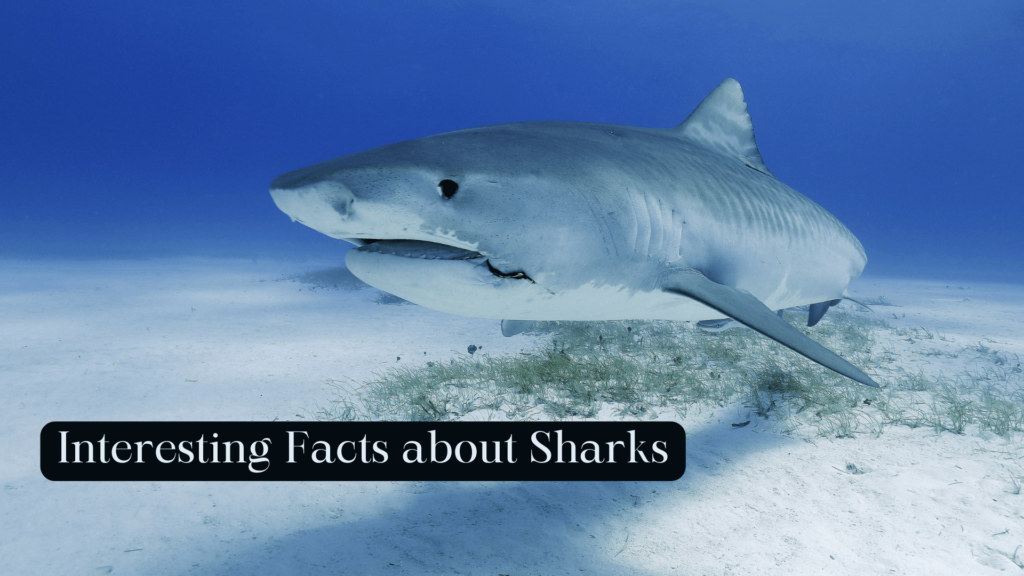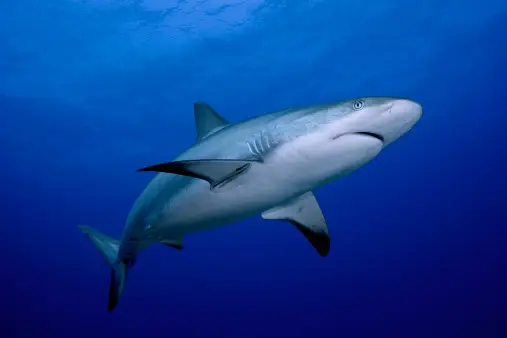Our Location
Islamabad, Pakistan

Sharks are fish, but they have cartilage instead of bone in their skeletons. Sharks are more buoyant and lighter than their prehistoric counterparts because their bones eventually turn into cartilage. Sharks’ skin is covered with scales, or denticles, facilitating their smooth swimming motion.
Sharks have extraordinary senses that enable them to locate, identify, and capture prey. They also have a mouth full of ever-growing teeth.

One of the planet Earth’s oldest surviving animals is the shark. They control 70 percent of the planet and have survived the worst mass extinctions.
Here are 15 interesting facts about sharks
| The biggest shark discovered to date was a 41.5-foot (12.6-meter) whale shark. |
| The short-fin mako shark, which can swim up to 65 miles per hour (104.6 kilometers per hour), is the fastest. |
| A blood drop in an Olympic pool is seen by sharks. |
| The shark is older than the dinosaur. |
| 22 times as much is consumed by great white sharks as by the ordinary person. |
| The age of sharks ranges from 425 to 455 million years. |
| The short-fin mako shark, which can swim up to 65 miles per hour (104.6 kilometers per hour), is the fastest shark. |
| Sharks utilize their Ampullae of Lorenzini, or electrosensors, to find food and navigate the waters. |
| Sharks can see up to 10 times better in muddy or dark water than people can in clear water. |
| Approximately 6,000 teeth can be produced annually by a shark. |
| Each year, 100 million sharks are killed by commercial fishing. |
| Most shark species are ovoviviparous. |
| Sharks open their eyes during relaxation and sleep. |
| The overwhelming fear of sharks is known as galeophobia. |
| Of the 500 species of sharks, only 10 have had human interactions. |

Sharks are clever and swift creatures who are only afraid of people. Yes, the only predators they have are ourselves. However, their bodies are real submerged machinery.
Their intricate systems for hearing, sight, smell, mouth, skin, electroreception, and lateral lines are designed to help them hunt and live in a variety of settings. Sharks were formerly referred to as “sea dogs.” These days, sharks rule the aquatic realm.
Let’s talk about ten surprising facts about sharks:
In actuality, sharks have really good memories. Sharks recalled as far back as 50 weeks in research. They made the identical choices about forms as they had made during the initial round of the investigation.
The pattern of spots on each whale shark is as distinct as a fingerprint. In the marine, whale sharks are the big fish. They can weigh up to 40 tons and grow to a height of 12.2 meters, according to some estimates. With a maximum length of 32 feet and a weight exceeding five tons, basking sharks are the second biggest fish in the world.
Sharks lack color vision. Sharks’ eyes have rods and cones that react to light, much like human eyes do. However, human eyes have three different kinds of cones that allow for color vision. Sharks, on the other hand, only have one type of cone; even those with a high cone count, such as the bull shark and black tip shark, can only see in black and white.
Shark skin has a sandpaper-like texture. Because shark skin is composed of microscopic teeth-like structures called placoid scales, commonly referred to as dermal denticles, it feels just like sandpaper. When the shark swims, these scales, which face the tail, help lessen the force of the surrounding water.
When the tide is too low for swimming, the epaulette shark may walk using its fins as its legs. It can also endure for prolonged periods with little to no oxygen, which enables it to forage in solitary low-oxygen tidal pools and traverse exposed reef areas. Walking sharks are found in Australia, Indonesia, and Papua New Guinea and are known to belong to nine different species.
Sharks’ stomachs may hold food for months at a time. Some sharks can evert their stomachs, turning them inside out to get rid of food that doesn’t sit well with them. Elasmo Research states that “sharks can do this all about as easily as you or I might return an inside-out sock.”
Whale sharks have a 100-year lifespan. Whale sharks develop more slowly as they become older, despite growing rapidly while they are quite young. They attain adulthood at the age of thirty, almost a third of their life.
The body of a shark is boneless. Rather, cartilage, a rubbery substance, is what makes them. Due to cartilage’s poor preservation (early shark fossil records are largely focused on scales and teeth), studying ancient sharks has become increasingly challenging for scientists.
The size of a school bus is comparable to that of whale sharks. National Geographic states that whale sharks may reach a maximum length of 32 feet! As if that weren’t difficult enough to comprehend, they are the biggest fish in the water, weighing up at 20.6 tons.
The tail of the thresher shark may grow to be roughly half the length of its body. Its tail functions as a weapon. With a maximum length of 19 feet, thresher sharks may have tails that measure over 10 feet. Sharks utilize their tails to entice food; when the prey gets too close to the tail, the shark will slap it until it becomes immobile.
Long reproductive cycles, low fertility, delayed maturation, sluggish growth, and lengthy lifespans are among the distinctive biological characteristics of sharks. Sharks only hatch or give birth to a small number of rather large, fully-formed pups. There are other occasions to be interested in sharks than Shark Week. Sharks may not be as violent as they are portrayed in movies, despite their negative reputation (like Jaws, for example).
Millions of sharks are slaughtered each year to meet the demand for their fins, which are consumed as a status symbol and turned into soup. Worldwide shark populations are declining as a result of overfishing and illicit fishing brought on by the demand for fins. The preservation of species such as sharks is the lifelong goal of conservationists.
Although certain shark species do require continual swimming, this is not the case for all shark species. Certain sharks, like the nurse shark, may lie motionless because of spiracles that push water over their gills. Sharks have active and relaxing times instead of sleeping like humans do.
Sharks have tiny black dots close to their mouth, eyes, and nose. The ampullae of Lorenzini, which are unique electroreceptor organs that enable the shark to detect changes in water temperature and electromagnetic fields, are these spots.
Images are personally made from Canva and is downloaded from Unsplash